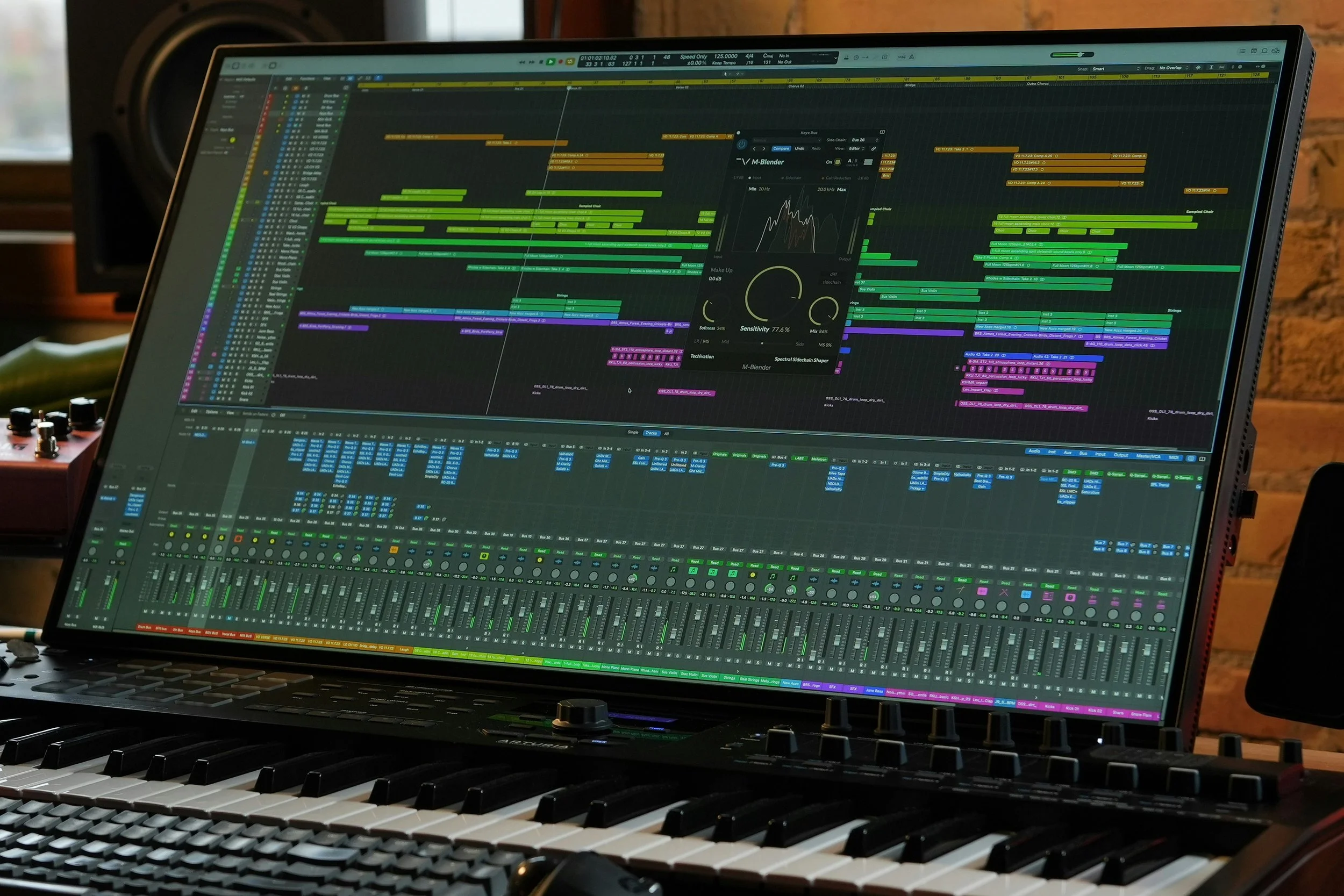What does a music producer do? Roles, workflow and the path from idea to finished song
Becoming a successful music producer requires both technical skill and creative thinking. In this guide, we explain what a music producer does, what the role might look like in different contexts, and what skills you need to turn ideas into finished songs.
What does a music producer do?
A music producer leads the creative and technical process from sketch to master. Depending on the genre and project, the producer can be a songwriter, arranger, engineer, coach - and sometimes all at the same time. Below we break down the most common elements of the role.
Roles in the creation process
A music producer has many roles: from recording and arranging to mixing and sometimes mastering. A good producer needs a deep understanding of both sound engineering and musical principles - and the ability to manage collaborations between artists, songwriters and musicians.
Creative Director: Ensures artistic vision, references and sound.
Arranger/Songwriter: Develops song structure, harmony, melodies and hooks.
Recording techniques: Selects the microphones, preamps, signal path and produces the best takes.
Vocal producer: Works with phrasing, timing, dubbing and ad-libs.
Mix/finish: Rough mix during creation, stems to mix technicians, feedback rounds.
Project management: budget, timeline, file structure, backup and communication.
The workflow - from idea to release (H3)
A typical workflow might look like this:
Pre-production: Reference listening, target image, BPM/key, sketch in DAW.
Songwriting & arrangement: Verse-chorus dynamics, transitions, instrument choice.
Sound design & recording: Drum programming, synth patches, live recordings.
Editing & rough mix: Comping, timing, tuning, level balance, buses.
Final mix & master: Either in-house or with external specialists.
Release preparation: Metadata, ISRC/UPC, cover, export, delivery to label/distributor.
Image idea: Infographic of the workflow from idea → release.
Image idea: Before/after example of arrangement (8-bar → full song).
Practical tips for aspiring music producers
How to become a better music producer
Master your DAW and plugins. Choose a main DAW (Logic Pro, Ableton Live or FL Studio) and build routines: templates, hotkeys, bus chains and gain staging.
Listen widely and actively. Analyze song structure, sound selection, stereo image and energy per section in several genres.
Iterate quickly. Work in sprints: 30-60 min/loop, export sketches, gather feedback early.
Work with references. Match level, tonal balance and roughness without copying.
Build a sample library you trust. Tag favorite sounds, create custom kits and preset folders.
Create a simple recording package. A good microphone, pop filter, headphones and acoustic treatment will go a long way in the beginning.
Document everything. Version number projects, save presets and export stems for backups.
Practicing vocal production. Guide melodies, harmonies, formants - the voice often carries the song.
Network smart. Co-writes, topliner sessions and remixes open doors.
Educate yourself. Structured programs accelerate the learning curve and build portfolio.
Explore our music production, DJ and songwriting courses: apacademy.se/courses.
FAQ
What does a music producer do?
A music producer is responsible for leading the creative process, shaping the sound and ensuring quality from demo to finished master. The role can include songwriting, arranging, recording, mixing and project management.
Which programs are most used by music producers?
Popular choices are Logic Pro, Ableton Live and FL Studio - all work professionally, choose the one that matches your way of working.
How long does it take to get good at music production?
With focused practice, feedback and routines, you can make great progress in 6-12 months. Professional level often requires 2-4 years of dedicated work.
What do you need to get started?
A computer, a good pair of headphones/monitors, sound card, microphone with pop filter and a DAW of your choice are enough to start an effective home studio.
How to upload music to Spotify?
Via a digital distributor. Prepare the correct metadata, ISRC/UPC, covers and masters in the correct format.
Executive summary
The role of the music producer combines technology, aesthetics and leadership. By understanding the workflow and practicing consistently, you can go from ideas to releases in a sustainable way. Want to develop your skills further?
Check out our courses at AP Academy and take your next step!


